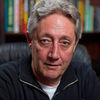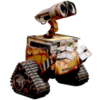Shutter priority in poor light
Nov 22, 2013 21:43:09 #
Moonsey
Loc: SW Michigan
Thanks for you advice, I will try, but sounds like I need to switch to a faster lens, but I will try your suggestions.
Nov 22, 2013 21:54:30 #
mwsilvers
Loc: Central New Jersey
Moonsey wrote:
I just thought shutter priority would be best to stop action. I will try aperture, and see qwhat happens.
It really done't matter what mode you use as long as you have a fast enough shutter speed and can still gather enough light. Keep in mind that shooting wide open may mean a too shallow DOF depending on how close you are and perhaps less sharpness away from the center.
Nov 22, 2013 23:06:18 #
Nah, Moonsey, you did just fine with SP, THAT'S what it's for.
You pick a shutter speed that in this case you will stop the motion, you let the camera do the rest. Leaving the auto ISO on could help. Other times you could use it the opposite way to create motion blur with a slower speed. I shoot local pro wrestling at 100th sec. or even slower all the time, even at times a 20th sec. At slower speeds you have to carefully pan with the wrestlers, or in your case the dancers. Very often, I shoot manual with the auto ISO so I get to decide on TWO variables myself and let the camera pick the third.
One caveat - the longer the lens, the higher the shutter speed needs to be so that your own hand shake won't be obvious. With your crop sensor it'll be about 1:1.5. That is with a 100mm lens, you should shoot for a 150th sec. minimum. As with everything, your mileage may vary.
FYI - I usually DO shoot the wrestling with 1.8 primes so that I can squeeze as much light out of the arena as possible.
The example here is - 1/80 f/3.2 ISO 1600 35.0 mm
You pick a shutter speed that in this case you will stop the motion, you let the camera do the rest. Leaving the auto ISO on could help. Other times you could use it the opposite way to create motion blur with a slower speed. I shoot local pro wrestling at 100th sec. or even slower all the time, even at times a 20th sec. At slower speeds you have to carefully pan with the wrestlers, or in your case the dancers. Very often, I shoot manual with the auto ISO so I get to decide on TWO variables myself and let the camera pick the third.
One caveat - the longer the lens, the higher the shutter speed needs to be so that your own hand shake won't be obvious. With your crop sensor it'll be about 1:1.5. That is with a 100mm lens, you should shoot for a 150th sec. minimum. As with everything, your mileage may vary.
FYI - I usually DO shoot the wrestling with 1.8 primes so that I can squeeze as much light out of the arena as possible.
The example here is - 1/80 f/3.2 ISO 1600 35.0 mm
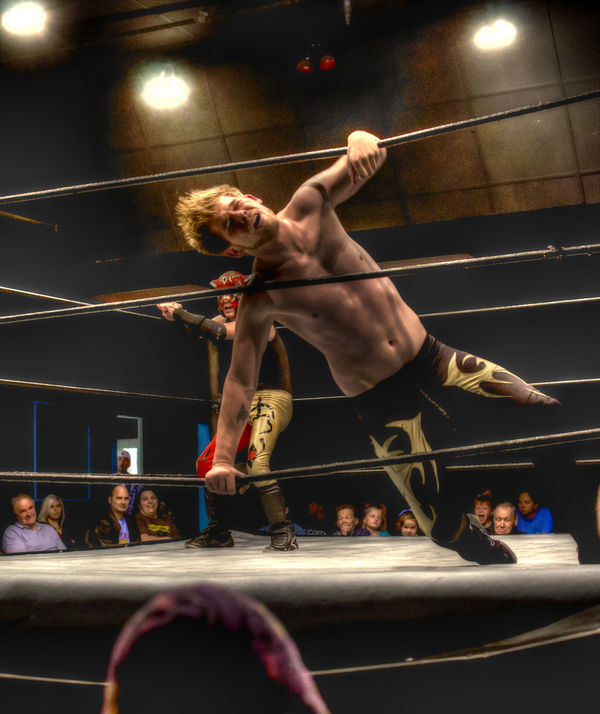
Nov 23, 2013 09:46:51 #
I would buy a Nikon 50mm AF f/1.8 lens. The cost is about $125, for a fast lens that is cheap.
I would use the lens as a zoom (the old fashion way feet}
Set to high ISO to increase the shutter speed.
After setting ISO look for a shutter speed of 1/250-1/500
After a few shots check.
I would use the lens as a zoom (the old fashion way feet}
Set to high ISO to increase the shutter speed.
After setting ISO look for a shutter speed of 1/250-1/500
After a few shots check.
Nov 23, 2013 11:01:04 #
Moonsey wrote:
I took photos of a dance practice, in the studio, horrible lighting, of course lots of movement. I was using a D7000, with a Nikon 24/85 mm lens. I usually use aperture mode, but switched to program. 1200 ISO, no flash. The pics were very blurry. Is this lens ok? If I switch to shutter priority, what speed should I use? The dancers can be very close, or across the studio, which is why I used the 24/85. It was just for practice, but what can I do to improve?
Have you tried Sports Mode?
Nov 23, 2013 11:07:27 #
I shoot sports sometimes. Consider shooting sports style using settings others have suggested, but shooting fast jpeg bursts with single point autofocus aimed at high contrast areas like a dark jacket against a white shirt; pan with the subject's face when you can; using a monopod can gain one or two shutter speeds over hand held; and use image stabilization if your lens has it. Personally, I'd go manual at 1/250 to 1/400, aperature wide open, and ISO on auto. I think it is easy to underestimate the effect that camera shake has on focus. Hand held, you need 1 ss for every mm to get focus on a stationary object. Moving objects compound the formula. Shooting bursts helps avoid trigger jerk because your hands will stabilize after the first frame or two if you can get over the emotional baggage that you are using camera life at a high rate. And, you'll get shots that you could not get in single shot mode. If you can get 10 years out of a 150,000 exposure body, that's not too bad. You can't take it with you. Go ahead and burn it up at about $0.01 per shot. On the downside, you have to wade through a million pictures in post, all of them looking pretty much the same at first.
Nov 23, 2013 11:57:57 #
Moonsey wrote:
I took photos of a dance practice, in the studio, horrible lighting, of course lots of movement. I was using a D7000, with a Nikon 24/85 mm lens. I usually use aperture mode, but switched to program. 1200 ISO, no flash. The pics were very blurry. Is this lens ok? If I switch to shutter priority, what speed should I use? The dancers can be very close, or across the studio, which is why I used the 24/85. It was just for practice, but what can I do to improve?
I would suggest getting a prime lens, rather than using a zoom. Pretty much any prime will allow a much larger aperture, and give you more scope with shutter speed. I don't know Nikon well, but I am sure they will have several to choose from...
Nov 24, 2013 06:21:15 #
lighthouse
Loc: No Fixed Abode
Would you guys please read what the OP has said?
Moonsey wrote:
Sorry, 3.5/ 4.5. Not fast enough, I guess. I own a 50 mm 1.4, an 85mm 1.8 and an 18-200, 3.5/5.6. I will switch to the 50mm. I just thought it would be worth a try with the 24-85.
Nov 25, 2013 11:22:18 #
A lot of bad and insufficient information here.
Garbage. You're shooting at shutter speeds fast enough to catch the action. That's WAY faster than needed for handheld shooting. The monopod gains you nothing there, but REALLY helps by supporting the camera and lens, keeping your arms from getting tired.
Same as above. The shutter speed is fast enough that the IS has no helpful effect. And if the camera is on a monopod/tripod, could actually be a detriment. It tries to damp out non-existent vibrations and adds it's own. TURN IT OFF!!!
Proof?
True, but we're talking about indoors, in a dance studio, where a 50mm is almost too long.
As above, shutter speeds that are fast enough that 'trigger jerk' is irrelevant.
This works ONLY if you shoot in JPEG, AND do a custom white balance in-camera. Trying to get the color right in PP is a nightmare.
And you need to use a memory card at least as fast as your camera can write, to maximize the number of shots you can get before the buffer fills and the shutter freezes.
RolandComfort wrote:
using a monopod can gain one or two shutter speeds over hand held;
Garbage. You're shooting at shutter speeds fast enough to catch the action. That's WAY faster than needed for handheld shooting. The monopod gains you nothing there, but REALLY helps by supporting the camera and lens, keeping your arms from getting tired.
RolandComfort wrote:
and use image stabilization if your lens has it.
Same as above. The shutter speed is fast enough that the IS has no helpful effect. And if the camera is on a monopod/tripod, could actually be a detriment. It tries to damp out non-existent vibrations and adds it's own. TURN IT OFF!!!
RolandComfort wrote:
I think it is easy to underestimate the effect that camera shake has on focus.
Proof?
RolandComfort wrote:
Hand held, you need 1 ss for every mm to get focus on a stationary object. Moving objects compound the formula.
True, but we're talking about indoors, in a dance studio, where a 50mm is almost too long.
RolandComfort wrote:
Shooting bursts helps avoid trigger jerk because your hands will stabilize after the first frame or two if you can get over the emotional baggage that you are using camera life at a high rate.
As above, shutter speeds that are fast enough that 'trigger jerk' is irrelevant.
RolandComfort wrote:
And, you'll get shots that you could not get in single shot mode. If you can get 10 years out of a 150,000 exposure body, that's not too bad. You can't take it with you. Go ahead and burn it up at about $0.01 per shot. On the downside, you have to wade through a million pictures in post, all of them looking pretty much the same at first.
This works ONLY if you shoot in JPEG, AND do a custom white balance in-camera. Trying to get the color right in PP is a nightmare.
And you need to use a memory card at least as fast as your camera can write, to maximize the number of shots you can get before the buffer fills and the shutter freezes.
Nov 25, 2013 19:00:15 #
Gosh, didn't know you cared so much. Actually, your advice to Moonsey works perfectly. 50mm, f/1.8, at 20' gives you DOF of 3.3' on a cropped sensor, so subject focus shouldn't be a problem. Where Moonsey went wrong was ISO at 1200, not enough, thus, AV probably dropped his shutter speed to under 1/100. I don't know why you're stuck on AV; why not go manual at say, 1/250 at f/1.8 and let ISO float? And, yes, my suggestions were a bit of overkill, however, here are a couple of shots to illustrate that you need a steady camera no matter what. Both shots are at 1/250, f/1.8, ISO 2000 (auto) and distance about 4.5'. I purposely jiggled the camera on the second shot. Point is that you can easily get bad focus at 1/250, not to mention the head-on car crash math that states that two cars head-on at 50mph equals a crash at 100mph. If dancers are yinging while your shakey hands are yanging, you can get fuzzy. Additionally, regarding burst shooting, I just cranked off 15 high res RAW on a pretty average Canon 7D using a cheap ($25 Kingston 16GB 266x CF) no problem. I advocate just popping 6 or 8 frames anyway. Like I said before, I think Moonsey's problem was going AV with not enough ISO. His problem is not lenses. He should go manual with adequate shutter speed for this miserable shooting situation, no matter what lens or focal length, and let ISO float.
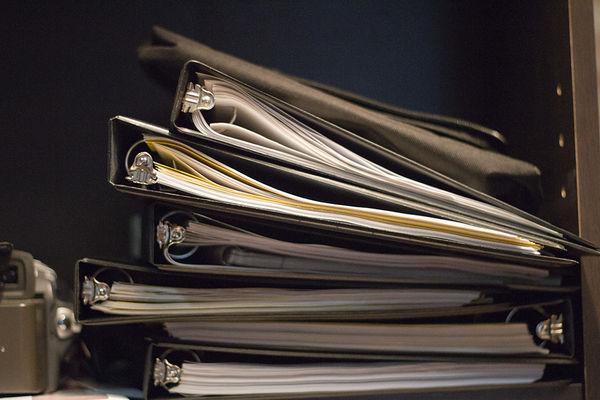
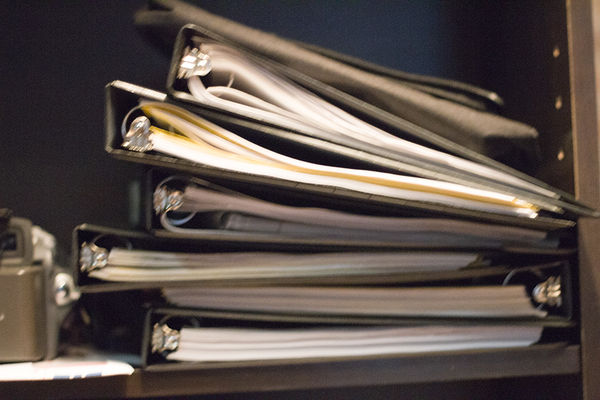
Nov 25, 2013 19:41:54 #
CurreyPhoto
Loc: Reddick, Florida
Moonsey wrote:
I took photos of a dance practice, in the studio, horrible lighting, of course lots of movement. I was using a D7000, with a Nikon 24/85 mm lens. I usually use aperture mode, but switched to program. 1200 ISO, no flash. The pics were very blurry. Is this lens ok? If I switch to shutter priority, what speed should I use? The dancers can be very close, or across the studio, which is why I used the 24/85. It was just for practice, but what can I do to improve?
Maybe I can offer some help. You need to experiment with shutter speed to determine what the lowest speed is that provides motion stopping. Then, you need to experiment with f stop to determine what f stop provides enough depth of field to get in good focus what you need to be in good focus. Then, set the camera to manual mode with the shutter speed at your determined value and the aperture at your determined value. Then set the ISO to automatic and set the upper limit as high as your camera will go. Then go take pictures in your studio. We know they will be sharp because you set the shutter speed to stop the action and we know you will have sufficient depth of field to get what you want in focus because you have set it according to your experimentation. Is the picture bright enough and free enough of digital noise? If it is too dark, your camera does not have a high enough ISO setting. If the picture is too noisy, then your camera is not a good enough high ISO shooter. In either case you need a camera that is up to your task. It's like trying to drive a stake with a tack hammer. It might be a brilliant tack hammer and perfect for all kinds of tacks and you may have better hammer ability than anyone, but you will fail because you do not have the right tool for the job. My suspicion is that you don't have enough camera to do the job. Shooting low light action is one of the most equipment dependent areas of photography. Let us know how all of our advice works out for you.
Nov 25, 2013 20:02:18 #
Moonsey
Loc: SW Michigan
CurreyPhoto wrote:
Maybe I can offer some help. You need to experimen... (show quote)
I used a 50mm 1.4 lens in the same studio the next day. Much better results. I think you may be right about my camera, but for now, it is what it is. I really appreciate all the helpful advice I received.
Nov 25, 2013 20:09:25 #
RolandComfort wrote:
His problem is not lenses. He should go manual with adequate shutter speed for this miserable shooting situation, no matter what lens or focal length, and let ISO float.
His problem is not lenses. He should go manual with adequate shutter speed for this miserable shooting situation, no matter what lens or focal length, and let ISO float.
RC, I don't know the 7000, but on my camera, on manual mode, I'm pretty sure the ISO will NOT float.
I don't know how you can say its NOT about lenses. It's all about the lenses. He has a 1.8. A 1.4 would cut his noise by 1/4 or give him that same speed more. A huge diff when you are absolutely borderline. The diff between some shots coming out a none at all.
I don't think he has a lot of choice on DoF. He needs to be wide open, to get the cleanest shots.
A 1.8 will work, but barely. He should try and borrow a 1.4. You can only focus one at a time. That's just the nature of the beast!
I still feel his best bet is to bring in a couple of extra lights.
RC, you want to compare his shots with your binders. Throw a binder into the air, then shoot it.
SS
Nov 25, 2013 20:56:39 #
I get the drift that he probably can't bring in lights as he is just a spectator at the event. I'll stick with set shutter first to capture motion, then f/stop to get exposure, then all you have left is ISO. If your camera does not have auto ISO then experiment up to higher ISO settings. Shoot RAW if you can. You'd be amazed at the detail and light that you can pull from a dark and dingy RAW original. That said, in dark environments, if there is action, you gotta go with shutter speed first. Don't let your camera mess you up. If you're going auto in dark environments then go TV set at enough ss to catch the action and the camera will do the rest to the best of its ability. Like I said, shoot RAW if you got it.
Nov 25, 2013 23:04:30 #
RolandComfort wrote:
I get the drift that he probably can't bring in li... (show quote)
RC, I will second all of that !!
SS
If you want to reply, then register here. Registration is free and your account is created instantly, so you can post right away.

